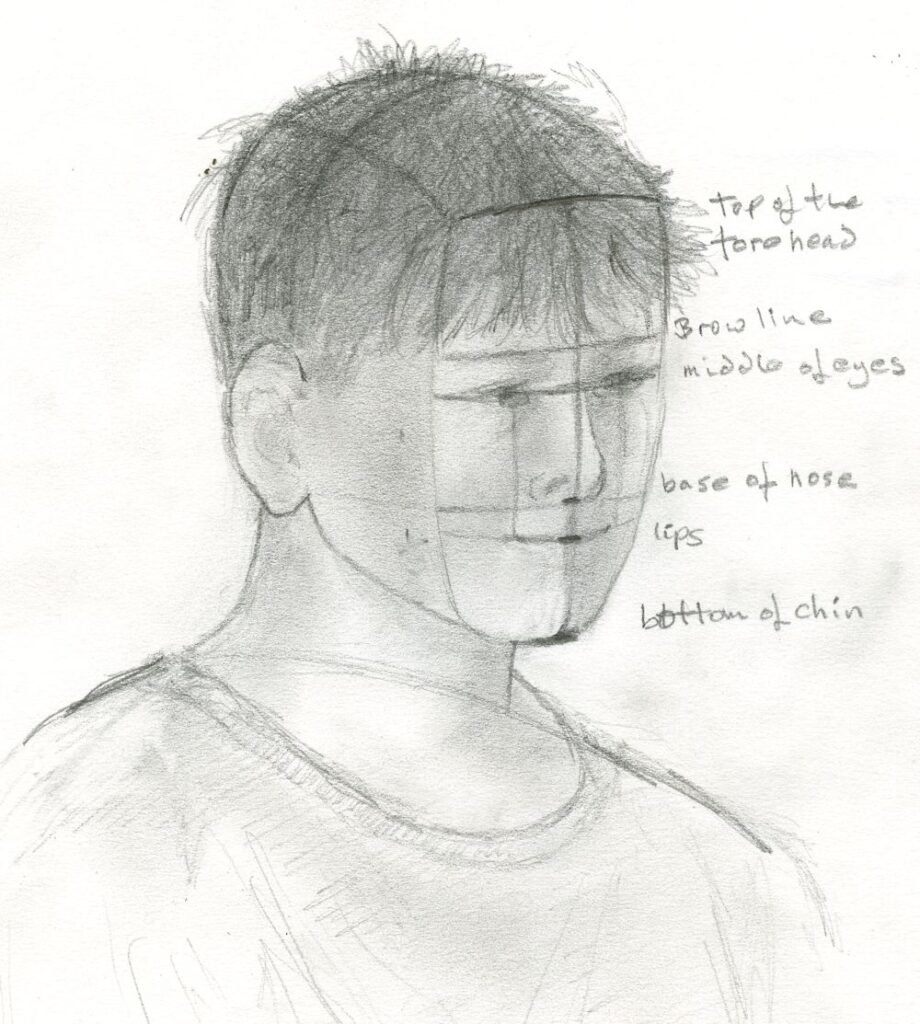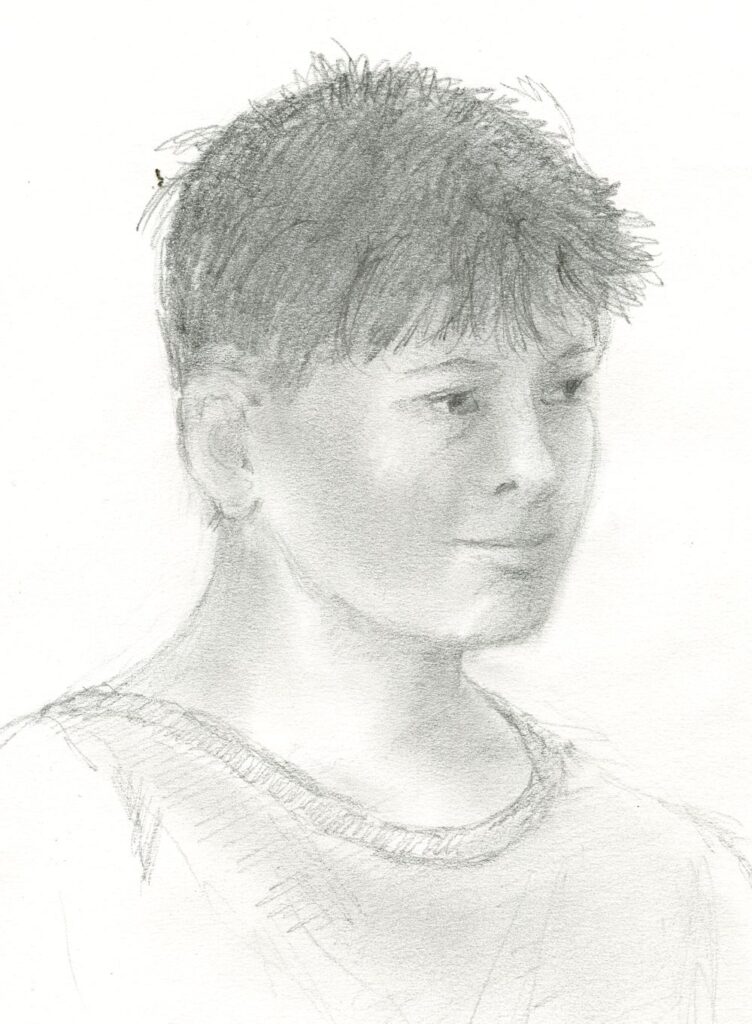Portraits of Older Children: Week 4
July 7, 2022
This week we will look at faces of older children in three quarter view. This is a different challenge as most of the front of the face can be seen but of course a lot of the side too.
If you have time practise drawing a few heads in three quarter view, and then mark out the board with a few useful lines ready to paint in pastel or acrylic.
Drawing a three quarter view; a few considerations
Try starting by getting the general head shape right and marking its relation to the neck and shoulders.
Make sure you get the overall width and height of your head correct and the width of the shoulders which are usually narrower than adult shoulders. Place the jaw line and suggest the position of the ear which you may have to adjust so go gently.
The features of the face can be thought of as lying on a curved plane on the front of the head. The sides of the head can be thought of as beginning where the forehead changes direction going back towards the ears. The visible width of this will vary enormously depending on whether the view is nearer to full face or nearer to profile.
Next try placing the features noting how the eyes are very different in shape than when seen full face. It will still help to put a feint construction line through them. The features lie symmetrically (more or less) on a slight curve rather than about a straight line as in the the full face view. Again it may be helpful to mark this faintly. The nose will project beyond this line i. e. stick out more!

Other useful markers are the base of the nose, the distance between the base of the nose and the upper lip and the distance from the base of the nose to the tip of the chin so measure and mark them. Then mass in the hair and Toby has masses of it! Then go back refine the shapes and show the form by hatching or shading all the toned areas you can see.
Some people like to think of the face as divided into three (approximately) equal parts; chin to base of nose, base of nose to brow line and brow line to the top of the forehead. Always remember to look though, as it is the small differences that make us unique!
Really looking is the most important way, but your looking should always be questioning; widths; angles; relative sizes; tones and of course colour. Have fun with the drawing and then enjoy the painting!
Your drawings and paintings:





